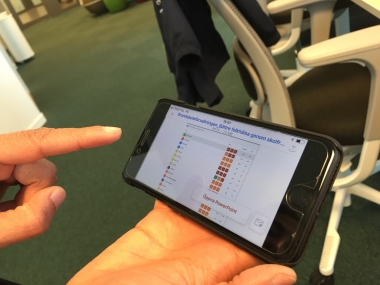Gothenburg: insight in non-attendance through a digital tool
Edited on
11 June 2019Gothenburg (Sweden) has been running a project, in partnership with one of the city district administrations in Gothenburg, to develop a digital tool that facilitates a more proactive and pre-emptive approach.

If schools are to improve their pupils’ academic performance, they need to address non-attendance more effectively. Many find non-attendance registration challenging and consider the process to be reactive. Furthermore, registration of pupil (non-)attendance by teachers has not been entirely satisfactory. When non-attendance statistics cannot be compiled and followed up adequately, it impedes correct and appropriate remedial action and pre-emptive analysis.
Creating a digital tool
To make the transition from a reactive response to school attendance to a proactive response, a different course of action was needed to tackle absence. An important source of support in this transition was the development of a digital tool.
The tool makes it easier for teachers to elaborate on opportunities that would stimulate individual pupils to change their pattern of behaviour and improve their attendance at school.
Moreover, it allows teachers and pupils to work together to improve attendance instead of simply analysing the reasons why a pupil was absent.
Involving teachers
Involvement of teachers facilitates acceptance and adaptation to the way the teachers want the system to function. Consequently, a number of teachers have been involved at every stage.
The biggest change has actually been perceived in the mindset of teachers and in the collaboration between teachers and pupils.
Keys to success
Because of the large number of people involved, the project rapidly becomes convoluted: more opinions, perspectives implies more time to process.
Therefore, what is necessary is twofold: good leadership, and a clear and simple yet detailed plan with an elaborate framework. Combined with a common understanding among all the involved stakeholders the project can find a path to success.
Submitted by Matthias Peynshaert on
